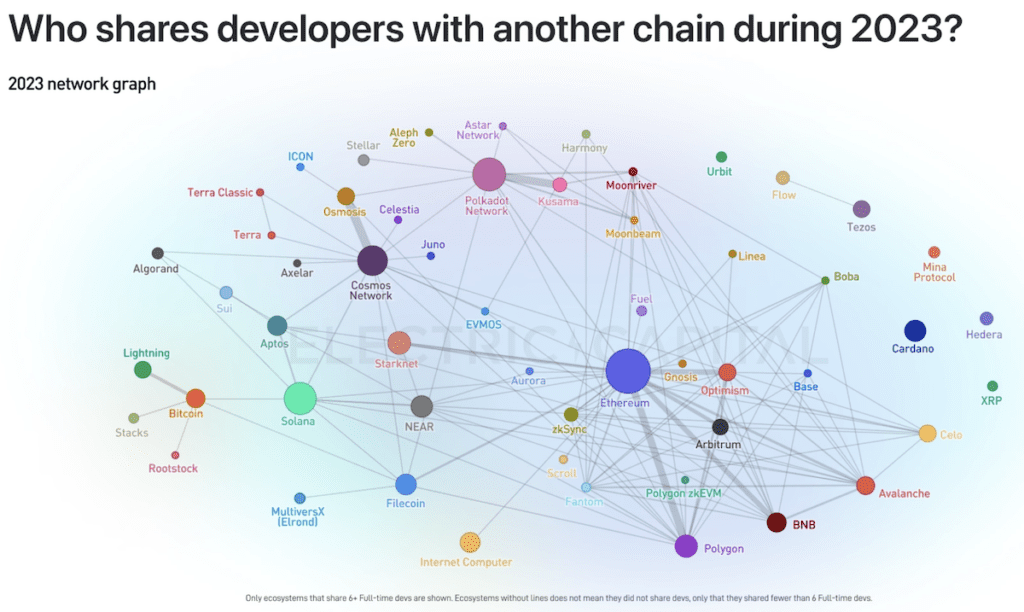A great video update from Charles has just landed covering the Electric Capital developer report, which among other areas explores development ecosystems and community links across chains.

You’ll recall if you’ve been following Cardano for a while that this has been an area that Charles has had focus on from the early days (recall the Ocean, Island and Pond metaphor), but irrespective of whether this report gives the complete picture it’s true to say that the Cardano ecosystem is not as linked as it could be at this point.
That’s somewhat to be expected given the EUTxO model used by Cardano is relatively unique and the bulk of the other chains are either Ethereum forks (or use the EVM) or are Ethereum L2’s. And while the EUTxO model is demonstrably more secure and powerful, it does not readily abstract to the simpler account based model used by Ethereum and requires different development patterns.
There were good reasons for choosing a functional programming language like Haskell for the node and smart contracts due to its strong adherence to formal methods, and consistency with Lamda Calculus used for Plutus. It was the correct decision as time has already proved. But it did slow down initial adoption.
It’s also taken time to build out languages like Aiken along with API tooling such as BlockFrost and Maestro, necessary to make the Cardano environment more accessible to non-Haskell devs.
We remain optimistic that these challenges will be relatively quickly overcome given the extremely rapid pace of development and large number of extremely talented devs already in the Cardano space. But it does suggest that Intersect, the Members Based Organisation that will take on responsibility for governance of Cardano as we move in Voltaire era, would be wise to continue focussing on this area.
Embedded below for convenience and worth watching in full.
